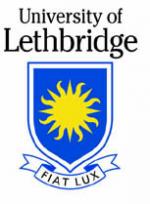Innovation Anthology #43:
If there’s gold in them thar hills, what then can you find in the rumen of a cow? Quite a lot according to Dr. Brent Selinger from the University of Lethbridge. As a microbiologist, he refers to himself as a bio-prospector.
DR. BRENT SELINGER: The whole idea is to go in and essentially bio-prospect in the rumen. It represents a huge untapped genetic resource. It’s a very rich ecosystem with hundreds of microbial species that have evolved to breakdown the materials brought into the rumen by the animal.
Dr. Brent Selinger suspects microorganisms in a cow’s rumen may hold the solution to excess phosphorus in livestock manure. This eventually makes its way into lakes and streams, causing problems with over-fertilization.
A big culprit is actually manure from swine and poultry. Unlike cows, pigs and chickens lack the enzymes that breakdown the phosphorus found in their feed.
However, treating the diets of pigs and chickens with these missing enzymes could reduce the phosphorus waste. And ultimately reduce the environmental cost to our land and watersheds.
Thanks today to The University of Lethbridge.
FOR INNOVATION ANTHOLOGY, I’M CHERYL CROUCHER.
Guest
,
, , , ,
Sponsor
University of Lethbridge
In 2007 The University of Lethbridge celebrated its 40th anniversary. The U of L campus is home to the world renowned Canadian Centre for Behavioral Neuroscience. The University is also a centre of expertise on water and remote sensing.
For more interviews with University of Lethbridge researchers, check out the website for Innovation Alberta. (2001-2008)

Program Date: 2007-06-26